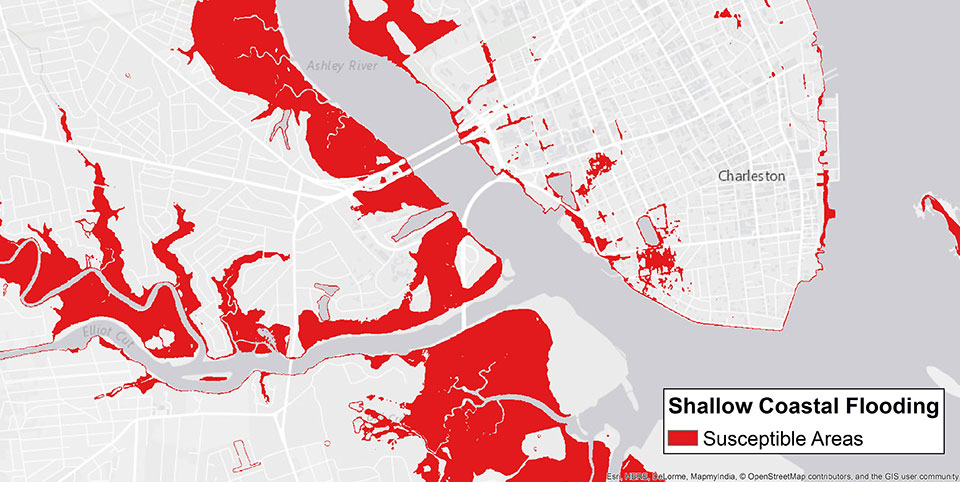From Texas to Maine, NOAA's Flood Information Tool Promotes Resilience
Mapping tool visualizes anticipated flood effects, aiding preparation for coastal storms.

What is the flood potential where you live?
NOAA's Coastal Flood Exposure Mapper enables users to visualize anticipated flooding effects along the entire U.S. East Coast and Gulf of Mexico in order to craft better resilience plans. According to the 2010 U.S. Census Bureau population count, 39 percent of the U.S. population lives in counties subject to significant coastal flooding. Charleston, South Carolina, shown here, is an example of one U.S. city with an increased risk of nuisance flooding, according to a 2014 NOAA report.
NOAA's Coastal Flood Exposure Mapper is a free online tool that provides maps, data, and information to assess risks and vulnerabilities related to coastal flooding and hazards. The tool is available for the entire U.S. East Coast and Gulf of Mexico.
With the Coastal Flood Exposure Mapper, you may select a location and a flood scenario of your choosing: Federal Emergency Management Agency flood designations, shallow coastal flooding associated with high tides, or flooding associated with sea level rise or storm surge. Flood maps are then overlaid with any of three exposure maps to show how floodwaters might impact area assets:
- 1. The societal exposure map provides information on population density, poverty, the elderly, employees, and projected population growth. Communities can use this information for planning and to determine how floodwaters might affect vulnerable or concentrated populations.
- 2. Roads, bridges, water, and sewer systems can be damaged by coastal flooding. Communities can use the mapper to assess infrastructure vulnerabilities and associated environmental and economic issues to determine the necessary steps to protect these assets.
- 3. The ecosystem exposure map provides data and information about natural areas and open spaces—including their proximity to development—to help communities identify which areas can be conserved for future flood protection benefits. Pollution sources are also identified to show where natural resources could be affected during a flood.
All maps can be saved, printed, and shared.